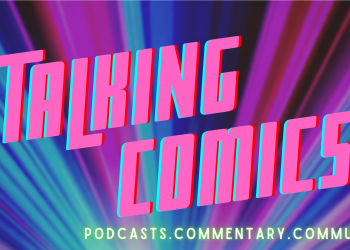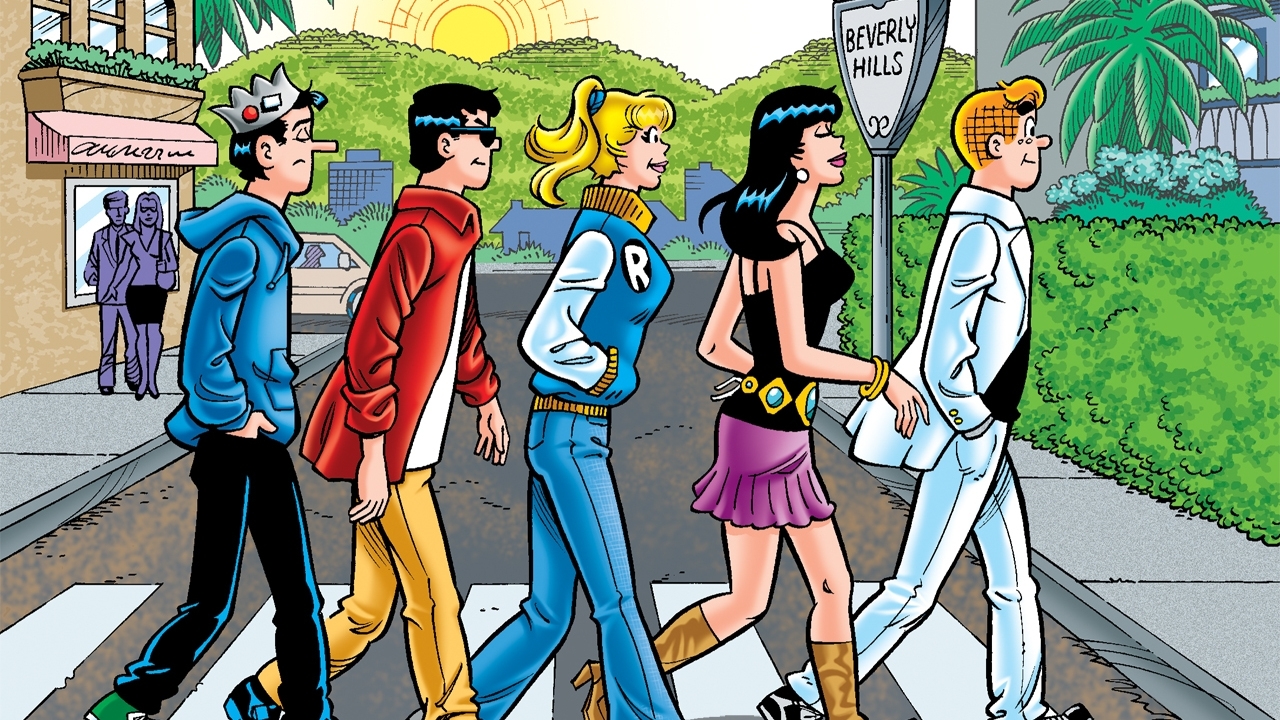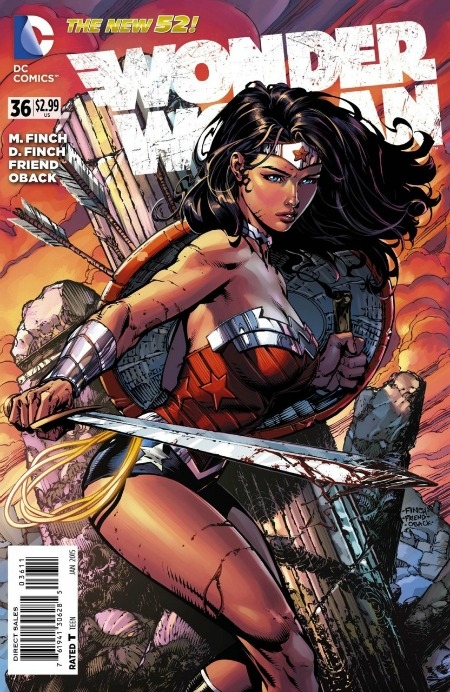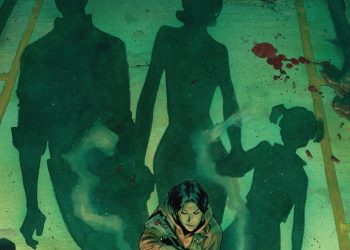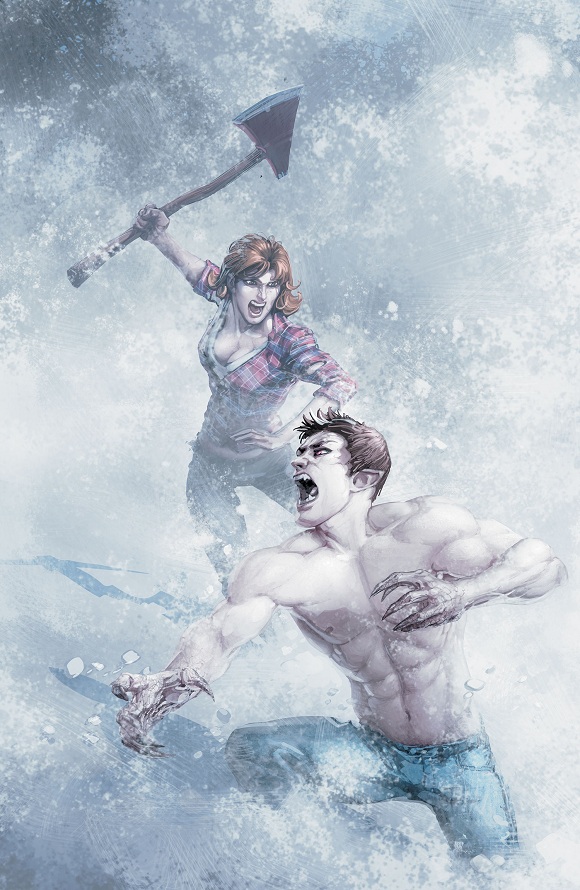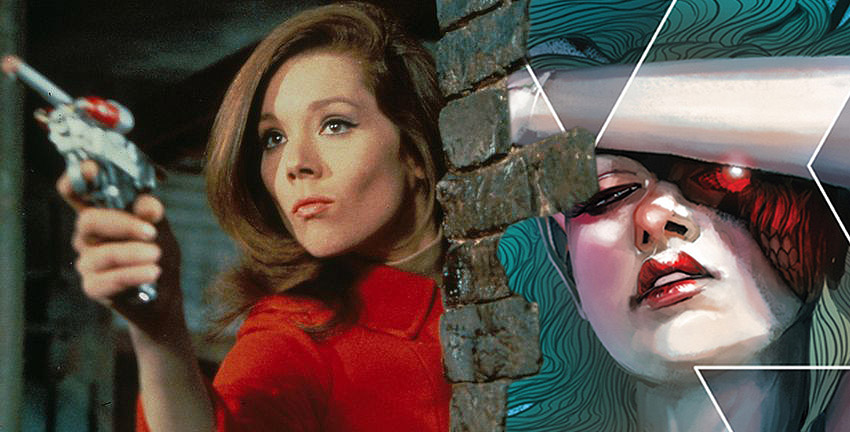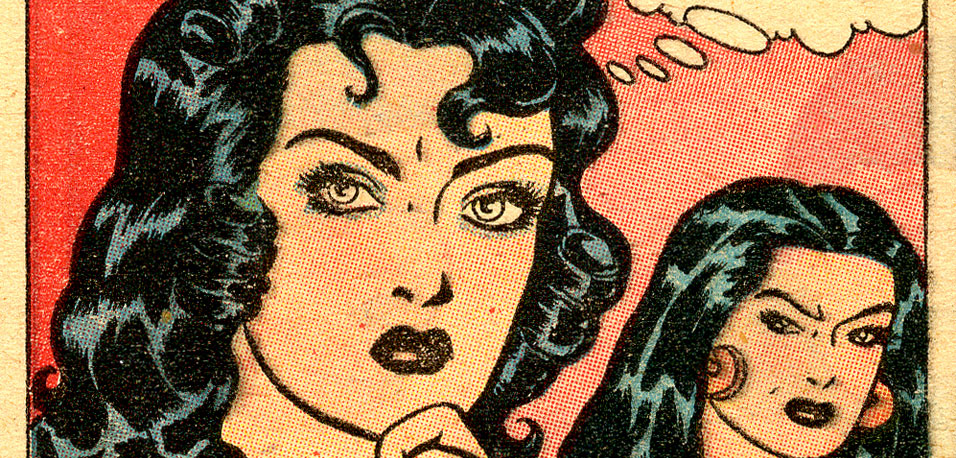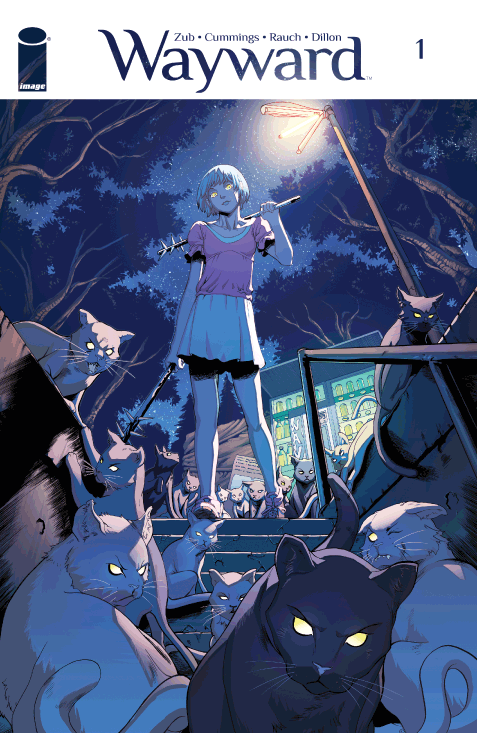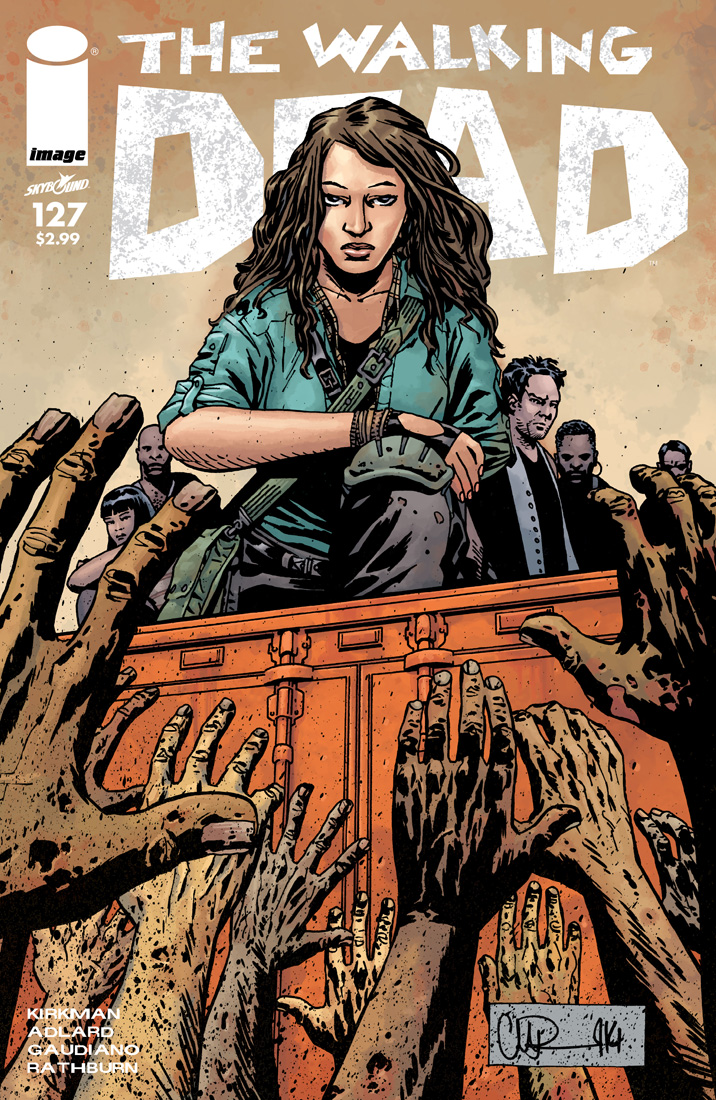My pathway to becoming a Captain Marvel AKA Shazam fan is probably the opposite of most fans of the Big Red Cheese. I came to Captain Marvel through Alan Moore’s classic Miracleman. Miracleman told the tale of Michael Moran, who as a young man was gifted with the ability to turn into one of the most powerful beings in the world by uttering the phrase ‘Kimota’. Yet after being caught in an atomic blast he forgot his past, his friends, and his abilities until years later as an adult he needed to become Miracleman to save himself and several others from terrorists. The tale goes from their and while great it has one of the most convoluted and confusing publishing histories in all of comics. Miraclman’s roots are in comic creator Mick Anglo continuing the licensed Captain Marvel comics in 1953 when there were no more Captain Marvel comics to reprint, he simply changed the title character to Marvelman and continued telling the tale. Marvelman returned in 1984 with Moore and company in Warrior and then came stateside as Miracleman so as not to draw litigation from Marvel comic. Then for decades no one was sure who owned the comic, the character, and how it could be republished. As I’ve written before I picked up my first issue of Miracleman when I was 12 years old and to me at the time it became a character I dreamed of. As a chubby and awkward preteen, it would have been a dream come true to utter the phrase “Kimota” and become the most powerful being in the world. My super heroic daydreams revolved around this concept for some time and my fanboy homemade heroes often used this gimmick. Sadly Miracleman quickly became mired in publishing hell and other heroes attracted me but that concept of a young boy becoming an adult super hero stayed with me and it was that concept that eventually led me to Captain Marvel.

Captain Marvel has a long and sad beginnings in comics. Originally created by Fawcett Comics as their foray into the growing super hero trend taking over comics. Captain Marvel was intended to be a rival to the popular Superman. Young orphan Billy Batson is empowered by an ancient Wizard with the ability to become the world’s Mightiest Mortal by uttering the wizard’s name, “Shazam!” Billy is replaced by an impressive adult gifted with all of the abilities of Solomon, Hercules, Atlas, Zeus, Achilles, and Mercury (FYI if you take the first letter of each name you get Shazam) and becomes earth’s mightiest mortal. Captain Marvel’s adventures began in Whiz Comics #2 in February of 1940 and he quickly became a popular character, so popular that he rivaled and later beat Superman for a time in sales. It was this success that drew DC’s wrath, which led to copyright lawsuits and Captain Marvel left comics in 1953. DC first leased the rights to Captain Marvel in 1972 the purchased them a decade later. Captain Marvel became a staple of their universe ever since. In 2012 to not be confused with Marvel’s Captain Marvel, a name Stan Lee copyrighted when the original Captain Marvel was stuck in publishing hell, DC’s character officially became Shazam.
Even though I originally gravitated toward Miracleman I knew who Captain Marvel was and to be clear to me he still is and will always be Captain Marvel. I know that today DC prefers Shazam and I understand the reasoning but I still refer to him as Captain Marvel and will throughout this piece. I was too young to remember the Shazam television show that ran from 1974-1977 where a teenage Billy Batson and his companion Mentor traveled in an RV righting wrongs and fighting evil when they came upon it. Nor do I remember the DC revival with Shazam! The original Captain Marvel although I have read this series, I find it fair to say that it doesn’t hold up against the test of time. In all honesty I find a lot of the back catalog for Captain Marvel to be hard to get through. I respect it but Captain Marvel and the entire Marvel Families early adventures are dated and were hard for me to get into. Of all these early adventures I actually liked the adventures of Captain Marvel Jr. the best as his stories were a bit darker and the art was a departure from the look of the main Captain Marvel title. My first Captain Marvel reading experience comes in the DC Comics Presents Annual #3 (1984) which saw Captain Marvel and Superman team up in a great story written by Roy Thomas with amazing art by Gil Kane. I found the issue in a back-issue bin shortly after I started reading Crisis on Infinite Earths, where Captain Marvel’s Earth-S would eventually merge with the remainder of the multiverse into one earth and Captain Marvel and the Marvel Family truly became part of the DC Universe and settled in Fawcett City (an Homage to Fawcett Comics). DC Comics Presents Annual #3 is still one of my favorite annuals and it increased my interest in DC’s Captain Marvel as I reconciled the fact that Miracleman and Captain Marvel have a shared history and that shared roots really moved me to read more Captain Marvel, if I could find the good Captain.

Lucky for me the ‘80s became a good time to be a new Captain Marvel fan. Yes Miracleman disappeared back into comic folklore but DC started to use their Captain Marvel more. He had a big role in Legends, DC’s follow up to Crisis that helped to mold the post-Crisis DC Universe. This was Captain Marvel’s real introduction to the pantheon of DC superheroes as they took on Darkseid and the New Gods of Apokolips. Captain Marvel became integral to the story and at the end of the mini-series Roy Thomas created a mini-series, Shazam!: the New Beginning, to firmly establish Billy Batson and Captain Marvel in the DCU. It’s a forgettable mini-series but more importantly Captain Marvel also joined the fabulous new Justice League by Keith Giffen, J.M. DeMatteis, & Kevin Maguire. This is where Captain Marvel replaced Miracleman in my imagination. By the time I read Miracleman the main protagonist was an adult, where Billy Batson was much closer to my age at the time and so I related to Billy. I did not get it at the time but a major change was incorporated into the Captain Marvel mythos during this time and as I went back to read earlier books it was clear that Captain Marvel and Billy were different people who exchanged places when Billy said “Shazam!”. In this new take Billy and Captain Marvel were the same person and so Captain Marvel was a grown man with a pre-teen mentality. Think Big with superpowers. This has become the common interpretation ever since and obviously one of the key gimmicks in the new Shazam! Movie. It was during this time that I dug into back issue bins and found the early DC series and some of the Justice Leagueof Americaissues that comprised the story arc Crisis on Earth-S. While the early DC stuff didn’t really do it for me the Justice League books were awesome and I read them so many times they fell apart on me. These JLA books not only introduced Captain Marvel and the Marvel family to the Justice League but it also updated the appearance of Captain Marvel as DC finally moved away from the Fawcett look. Captain Marvel, Mary Marvel, Captain Marvel Jr. and the supporting characters and his rogue’s gallery were finally drawn like the characters around them and it was a nice change.
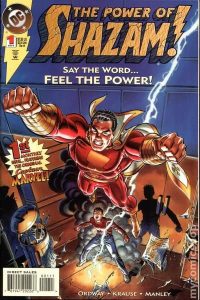
After my initial foray into the world of Captain Marvel it became a little harder to find Captain Marvel comics. He left Justice League and there weren’t that many new appearances of Captain Marvel in DC books. It wasn’t that I lost interest I just didn’t have a book to go to and so my comic reading turned to other books and heroes, then the ‘90s happened and the Imageartists began their revolution of art first with story second and comics changed. It became harder to find good books, especially good super hero books which have always been and still are my reading staple. Both Marvel and DC bought into the Image model and I seriously thought about leaving comics behind but there were still a few gems and luckily one of those was Jerry Ordway’s the Power of Shazam. In a sea of style over substance the Power of Shazam was a retro series that felt like a classic book with modern sensibilities. It was a soft reboot as Legends and Justice League still counted but nothing else did. Jerry Ordway is, in my opinion, one of the most underrated comic creators in the history of the medium. Ordway is amongst generation of modern comic creators who entered the medium in the late ‘70s but rose to prominence in the ‘80s with incredible artistic runs on All-Star Squadron and Infinity Inc and for adding his inking talents to George Perez’s pencils on Crisis on Infinite Earths. Ordway was given the task of restoring Captain Marvel and the Marvel Family to the stature they once had. The Power of Shazam was a gem in a sea of shoulder pads, thongs (male & female), larger than life guns, and pouches… so many pouches. Joined by artists Peter Krause and Mike Manley Ordway updated the Captain Marvel mythos, keeping much of what worked in the past but with some modern sensibilities. Along with DC’s other retro title, Starman, the Power of Shazam was an incredibly fun series that was a bright light in a sea of mediocre super hero comics that littered the shelves. Ordway fully embraced its Golden Age roots and DC let the book be eclectic and nostalgic. It was a fun four years and it was nice to see Mary Marvel and Captain Marvel Jr. get more attention than they had since the heyday of Fawcett Comics. Black Adam and the rest of the staple of Captain Marvel villains were introduced over the course of the series until Ordway had reestablished everything that had worked for Captain Marvel in the ‘40s but firmly planted in the modern day.

Yet it ended and sadly so did Captain Marvel comics for a time period. Geoff Johns, who has an incredible fondness for the Big Red Cheese, brought him into his JSA reboot and Alex Ross used him in one of his large tabloid size graphics novel but there wouldn’t be a new Captain Marvel series for some time. JSA was an enjoyable read and Johns treated Captain Marvel with the love and respect he deserves. But he was a member of an ensemble and therefore wasn’t always front and center. In the mid-2000s Judd Winick would take over as the principle creative architect for Captain Marvel for the better part of the decade, up until the New 52. Winick started with one of my favorite Captain Marvel stories inSuperman/Shazam: First Thunder! Joined by the breathtaking artwork of Joshua Middleton First Thunder tells the tale of the first post-Crisis meeting of the Man of Steel and Earth’s Mightiest Mortal. Set in the time period when Superman and Batman have begun to operate but before many of the other Silver Age heroes have appeared First Thunder integrates Captain Marvel into this than emerging DC Universe. It’s a great four-issue mini-series that is entertaining as a story but also for fans of Captain Marvel it is intriguing to see Superman and Captain Marvel interacting and becoming friends considering it was Superman and the DCpowers that be that forced Fawcett to stop publishing Captain Marvel comics to begin with. Anyone new to Captain Marvel I highly recommend this series, as it not only is a great introduction to Captain Marvel but also sheds light on Billy Batson and how growing up on the streets have really formed his perspectives. It’s also beautifully drawn by Joshua Middleton, an artist that we just don’t see enough of.
Unfortunately, Winick’s next outing with Captain Marvel was less then spectacular. DCwas at a crossroads with its universe. It had rid itself of its multiverse with Crisis on Infinite Earths but they wanted to restore the parallel earths and did so with Infinite Crisis. While I was more that excited for the return of the Multiverse I did not like the path DCchoose for Captain Marvel and the Marvel Family. One of the plot threads in the buildup to Infinite Crisis was the death of the wizard Shazam by an out of control Spectre, Billy then assumed the role of the Wizard and Freddy Freeman (Captain Marvel Jr.) became the new Captain Marvel as he tried to prove himself in the 12 issue maxi-series the Trials of Shazam. Again written by Judd Winick with art by Howard Porter and Mauro Cascioli. I was not a fan of the Trials of Shazam and the direction it placed the Marvel family on. Billy Became simply Marvel, with a white costume and long beard he looked more like the Wizard Shazam then Captain Marvel. Freddy became Shazam and had a more traditional red garb. Mary Marvel began using Black Adam to obtain her powers and with a new black suit she became more aggressive and less heroic. It was too much for me and I bailed on the series and Captain Marvel. What I loved wasn’t there anymore and while I’m fine with change I do believe the change needs to make sense. This didn’t need to be done. There was nothing wrong with Captain Marvel. Great origins and stories don’t need wholesale change, they can be tweaked and expanded upon but you don’t need to change them in such a drastic manner. It felt like DC didn’t know what to do with Captain Marvel and the Marvel Family so they decided to throw everything out and see what happened, not surprisingly what happened were low sales and the return of Geoff Johns to right the ship.

It would be a few years before Captain Marvel would return to comics, and this time his name would officially become Shazam as DC decided they no longer wanted to play the Captain Marvel game with Marvel, especially as Marvel’s Captain (Carol Danvers) was growing in popularity. Geoff Johns had a history with the Big Red Cheese going back to his time on JSA but with the New 52 and the clean slate DC had with their line wide reboot Johns decided to play around with the character. Beginning in Justice League #7 and running through #21 Geoff Johns and artist Gary Frank rebooted Captain Marvel, which has become the origin of record and the basis for the new film Shazam! Shazam as he is now known is not my favorite take on the character although I do like that now Billy is an angst-ridden orphan, rather than the positive upbeat orphan he was portrayed as early on. Taken in by a foster family Billy eventually gains his powers from the Wizard Shazam but now shares in not just with his sister Mary and friend Freddy and his three other foster siblings (Eugene, Pedro, & Darla) and they now operate as the Marvel family. This concept began in Flashpoint but was adjusted in the New 52 and continues in Rebirth with the current series Shazam! by Geoff Johns and artist Dale Eaglesham.
I don’t know what to expect from Shazam! This weekend. I know that there is going to be a lot of the modern Geoff Johns interpretation but I’m also hoping for some classic Captain Marvel goodness. When it was originally announce that Dwayne ‘the Rock’ Johnson would be Black Adam I was very intrigued but I became super excited when Zachary Levi was chosen to portray Shazam. I loved Chuckand I think he has the abilities to play a young teen as an adult super hero. I really am hoping for Big with lots of superpowers and big action pieces. DC seems to have righted their ship and hopefully this path continues with Shazam!, a movie I never thought I would be going to see but am very excited to be. The awkward chubby preteen in me can’t wait to see that first transformation, a transformation many Captain Marvel fans always wished that they were able to. But at least I had the comics and years of enjoyment, and hopefully the movie only brings in more fans and readers since the rich history of Captain Marvel is an amazing ride.


